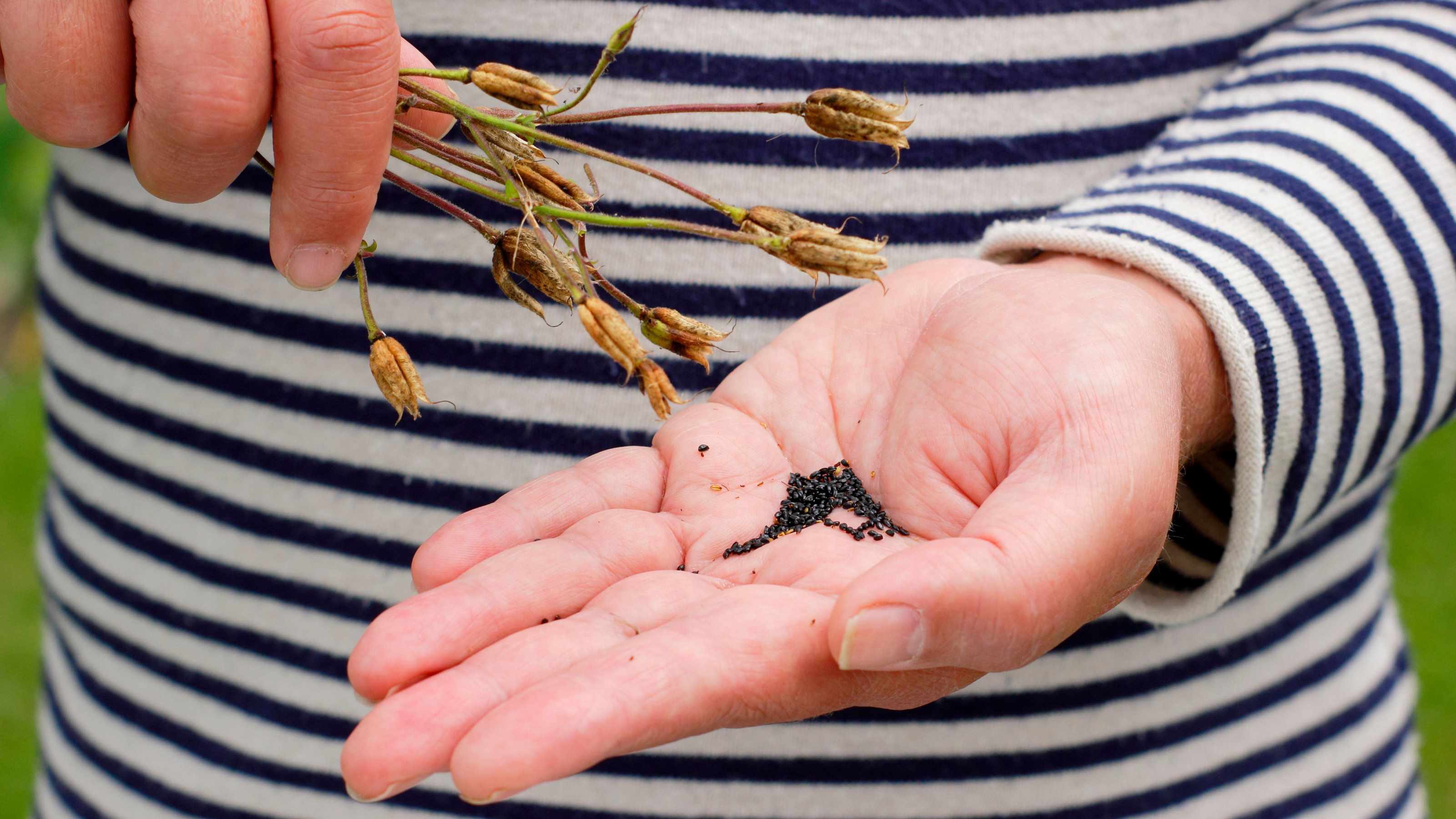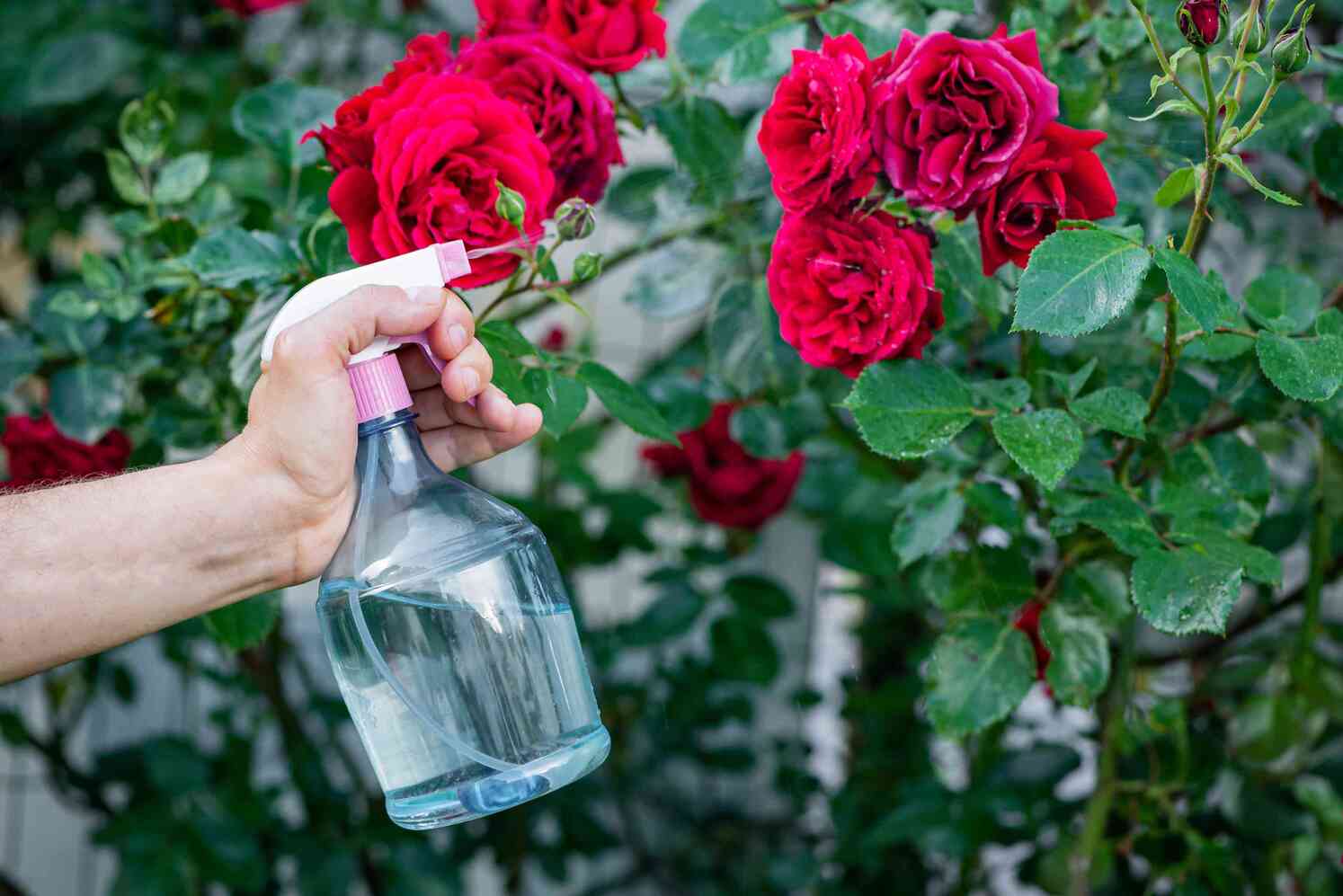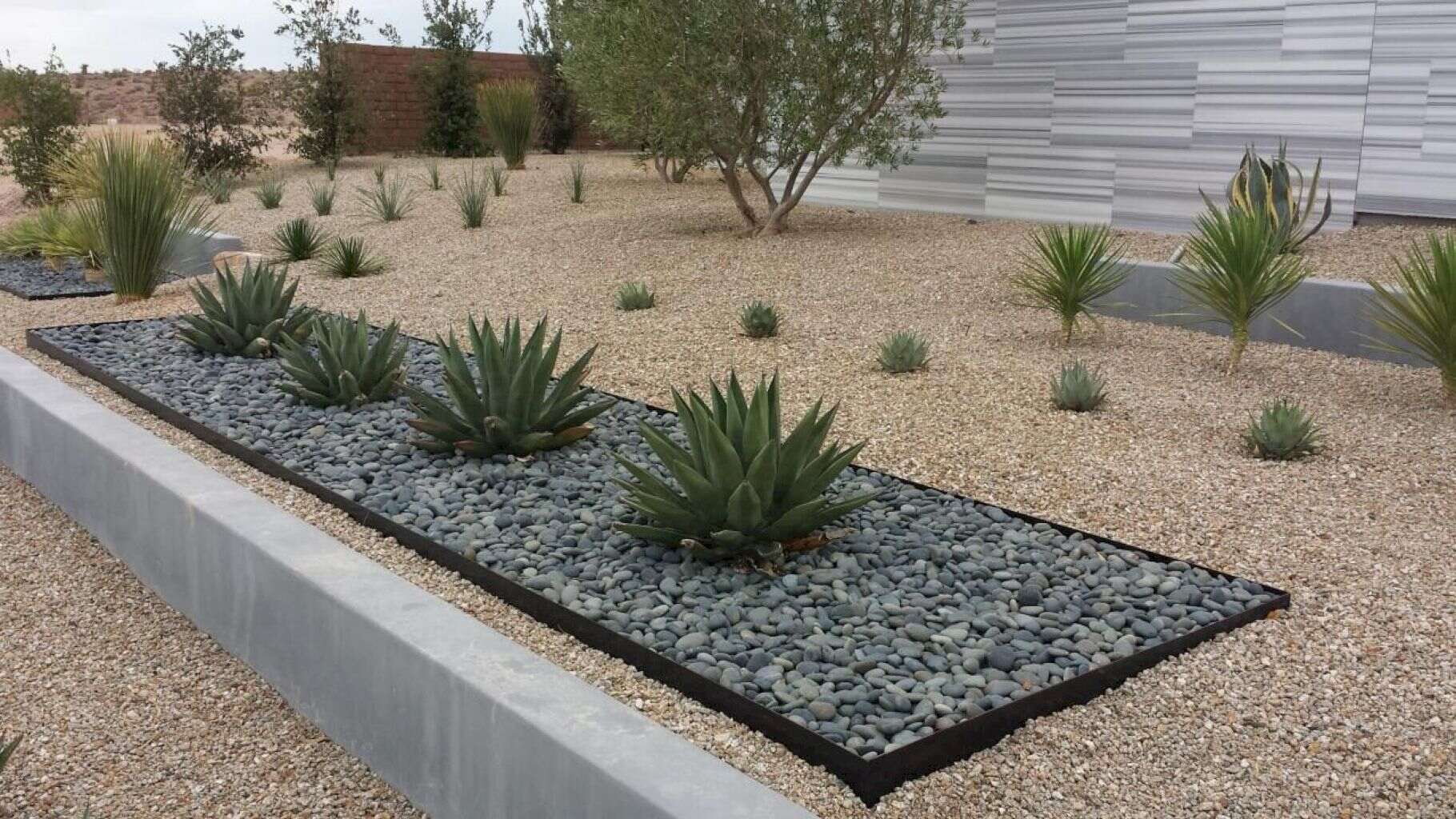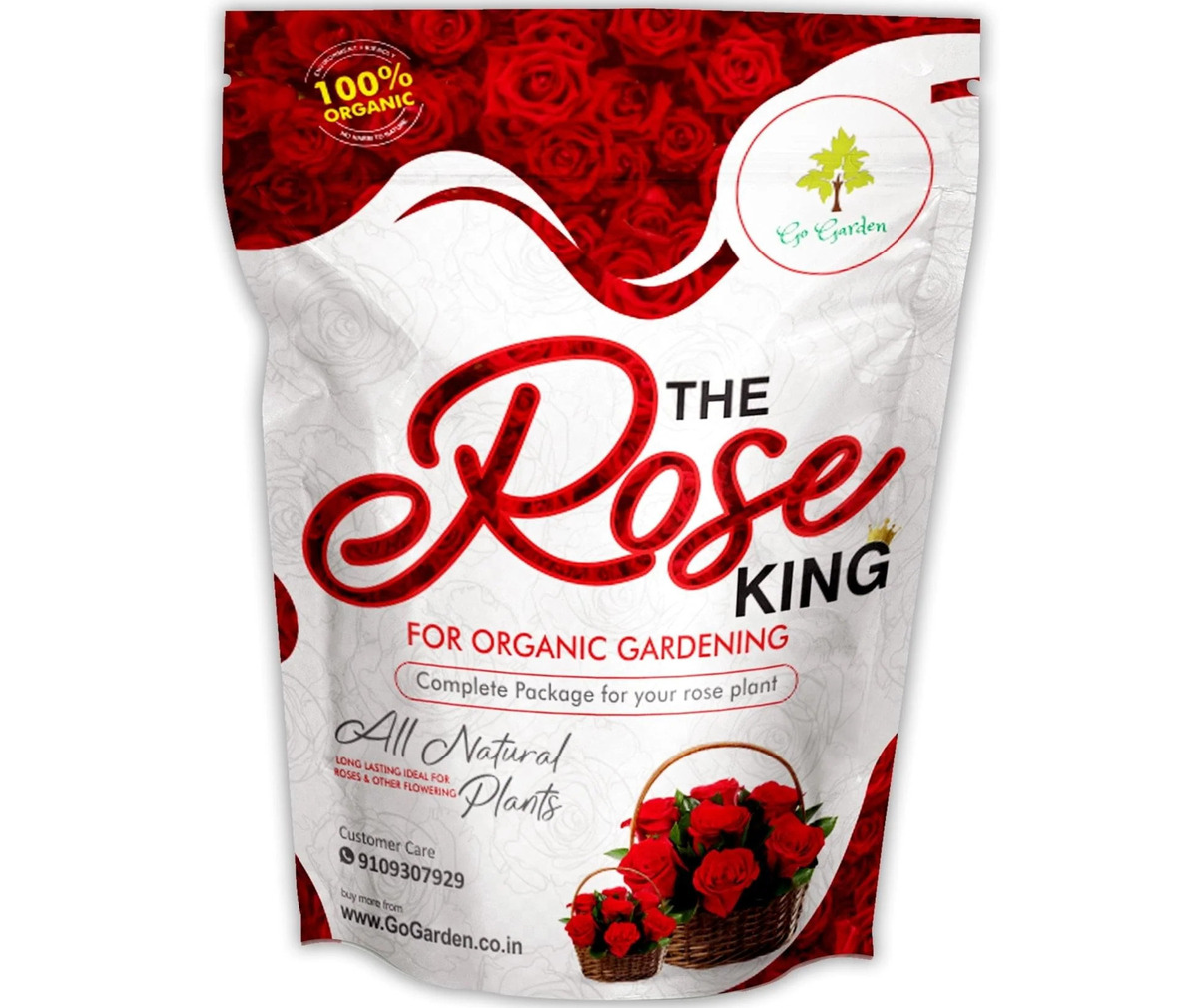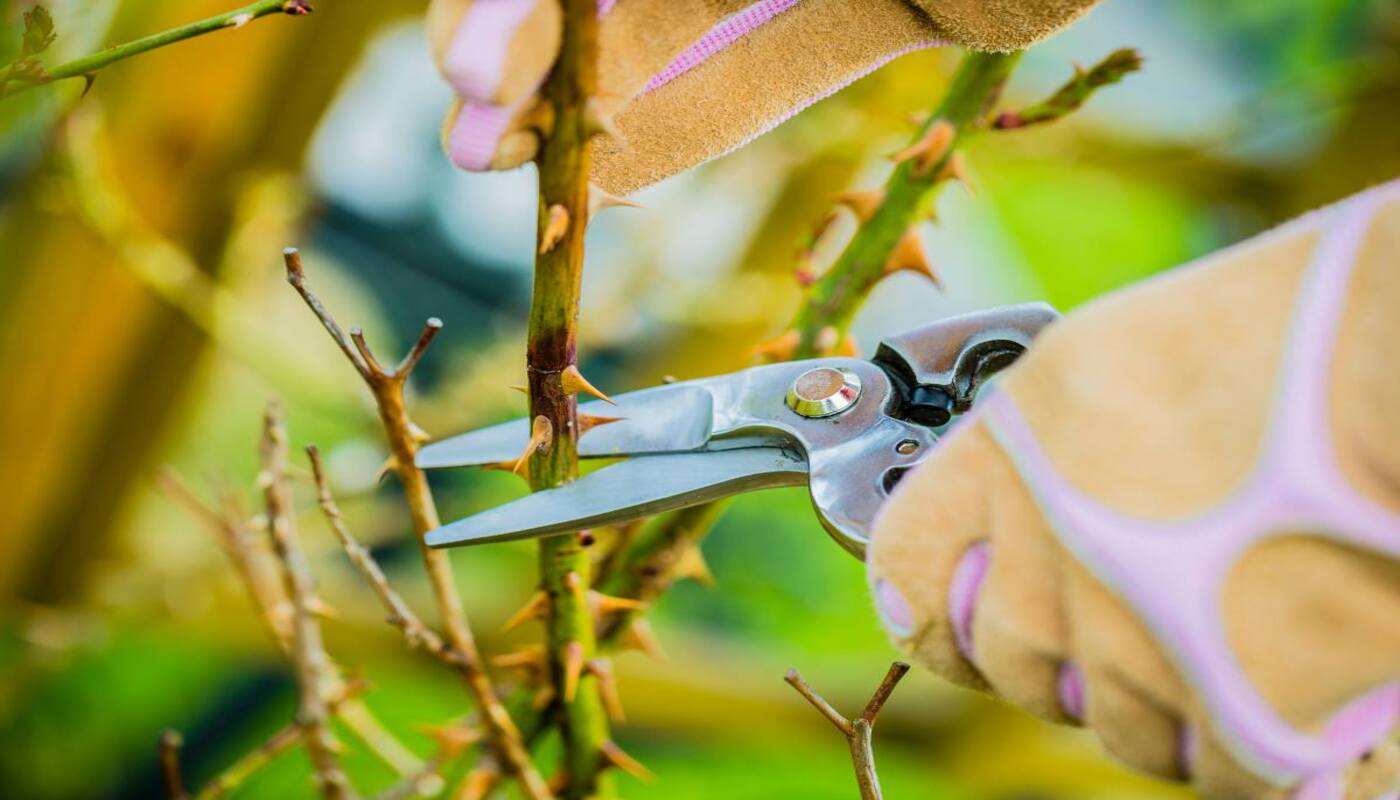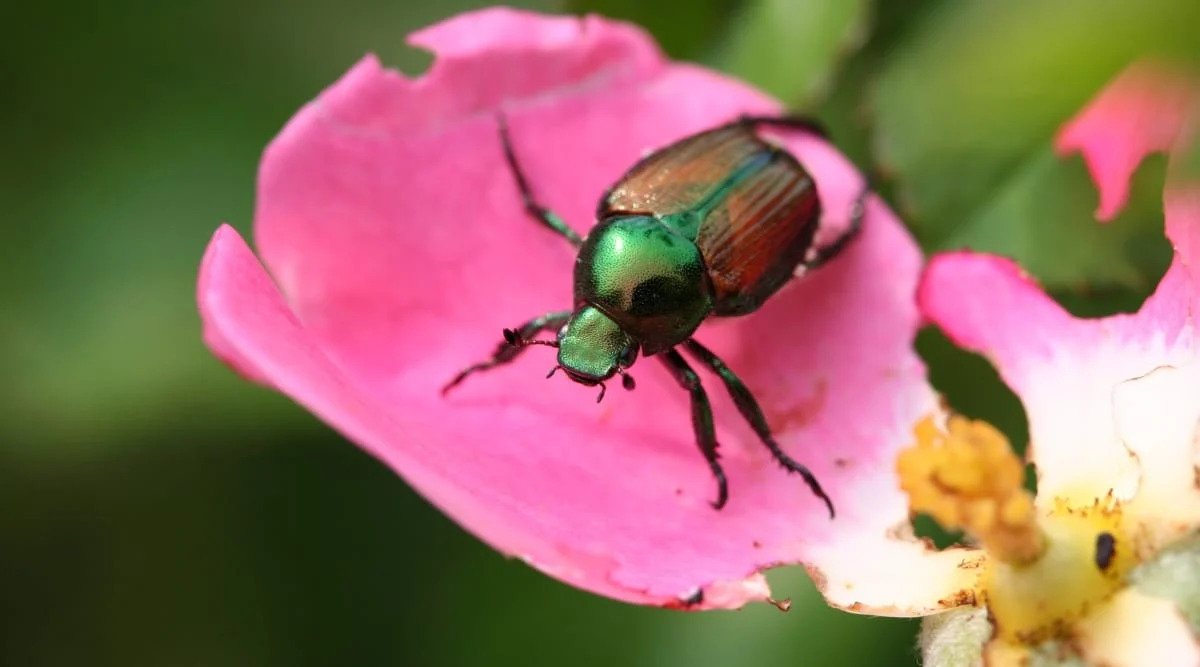Home>Gardening Techniques>DIY Projects>How To Bonsai A Desert Rose


DIY Projects
How To Bonsai A Desert Rose
Modified: January 22, 2024
Learn how to create beautiful Desert Rose bonsai plants with our DIY Projects guide. Transform your garden with these stunning creations.
(Many of the links in this article redirect to a specific reviewed product. Your purchase of these products through affiliate links helps to generate commission for Chicagolandgardening.com, at no extra cost. Learn more)
Table of Contents
- Introduction
- Choosing the Right Desert Rose for Bonsai
- Preparing the Tools and Materials
- Selecting the Proper Container
- Pruning and Shaping Techniques
- Wiring and Training the Bonsai
- Watering and Feeding the Desert Rose Bonsai
- Repotting and Root Pruning
- Maintaining Health and Pest Control
- Displaying and Enjoying Your Desert Rose Bonsai
- Conclusion
Introduction
Welcome to the wonderful world of bonsai, where art and nature converge to create miniature living masterpieces. Bonsai, which originated in China and flourished in Japan, is an ancient and revered art form that involves the cultivation and shaping of small trees in containers. While traditionally associated with species like pine, juniper, and maple, bonsai enthusiasts have pushed the boundaries and experimented with a wide range of plants, including the elegant and resilient desert rose.
The desert rose, scientifically known as Adenium obesum, is a stunning succulent native to arid regions of Africa and the Arabian Peninsula. With its vibrant flowers and distinctive swollen trunk, the desert rose is a captivating choice for bonsai enthusiasts. Its ability to thrive in challenging conditions, combined with its unique aesthetic qualities, makes it an excellent candidate for bonsai cultivation.
In this article, we will guide you through the process of bonsai-ing a desert rose, from selecting the right plant to caring for it and shaping it over time. Whether you are a seasoned bonsai enthusiast or a beginner looking to embark on your first bonsai journey, we hope this guide will provide you with the knowledge and inspiration to create and care for a beautiful desert rose bonsai.
Choosing the Right Desert Rose for Bonsai
When selecting a desert rose for bonsai, there are several factors to consider to ensure the success and longevity of your miniature masterpiece. Here are some key points to keep in mind:
- Species: There are many different species and varieties of desert roses, each with its own unique characteristics. Look for a species that is well-suited for bonsai cultivation, such as Adenium obesum or Adenium arabicum. These species have smaller leaves and compact growth habits, making them ideal for bonsai.
- Age and Size: It is best to start with a desert rose that is at least a few years old, as younger plants may not have developed the desired characteristics for bonsai. Choose a plant with a trunk diameter of at least 1 inch, as this will give you more options for shaping and styling the bonsai.
- Health and Vigor: Inspect the potential bonsai candidate for signs of good health. Look for a plant with thick, healthy foliage, free from pests or diseases. Avoid plants with yellowing leaves, weak growth, or signs of stress.
- Trunk Formation: Consider the shape and formation of the trunk. Look for plants with interesting and unique trunk shapes, such as twists, bends, or gnarled features. A well-formed trunk will add character and visual appeal to your bonsai.
- Root System: Carefully examine the root system of the desert rose. Look for a plant with a well-developed and balanced root system. Avoid plants with roots that are excessively tangled or circling the pot, as these can hinder the future growth and health of the bonsai.
Take your time to explore and select the perfect desert rose for your bonsai project. Remember that each plant has its own unique qualities and potential, so choose one that resonates with you and fits your artistic vision.
Preparing the Tools and Materials
Before diving into the bonsai-ing process, it is essential to gather all the necessary tools and materials to ensure a smooth and successful experience. Here are the key tools and materials you will need:
- Bonsai Pruning Shears: These specialized pruning shears are designed for precise and delicate cutting of branches and foliage. Invest in a high-quality pair of bonsai pruning shears to ensure clean cuts and minimize damage to the plant.
- Wire Cutters: Wire is crucial for shaping and training the branches of your desert rose bonsai. Wire cutters are essential for removing the wire without causing harm to the tree. Look for wire cutters specifically designed for bonsai, as they are sharper and more precise.
- Bonsai Wire: Choose bonsai wire of different gauges to accommodate various branch thicknesses. The wire should be flexible enough to bend the branches but strong enough to hold them in the desired shape. Copper or aluminum wire is commonly used for bonsai shaping.
- Bonsai Soil: Desert roses require well-draining soil with good moisture retention. Look for a bonsai soil mix that is specially formulated for succulent plants. Avoid soil that is compacted or retains moisture for too long, as this can lead to root rot.
- Bonsai Pot: Select a pot that is proportionate to the size of your desert rose bonsai. Consider the style and color of the pot, as it should complement the aesthetic of the tree. Bonsai pots are typically shallow to restrict root growth and promote the appearance of old age.
- Watering Can: Choose a watering can with a fine rose or nozzle to provide a gentle and even flow of water. This will help prevent soil disturbances and ensure that water reaches all areas of the bonsai’s root system.
- Wire Brush: A wire brush is handy for gently cleaning the trunk and branches of your desert rose bonsai. It helps remove dirt, debris, and dead bark, revealing the tree’s natural beauty.
Additionally, keep a clean work area and have some rubbing alcohol on hand to disinfect your tools between uses. With the right tools and materials, you will be well-prepared to embark on your desert rose bonsai journey.
Selecting the Proper Container
Choosing the right container for your desert rose bonsai is an important decision, as it not only affects the aesthetic appeal of the tree but also plays a role in its overall health and development. Here are some considerations to keep in mind when selecting a container:
- Size: The size of the container should be proportionate to the size of your desert rose bonsai. A container that is too small may restrict root growth and lead to stunted growth, while a container that is too large can make the tree appear disproportionate and hinder root development. Aim for a container that provides enough space for the roots to grow and expand, with some room for future growth.
- Drainage: Proper drainage is crucial for the health of desert rose bonsai. Look for a container with drainage holes at the bottom to allow excess water to escape. These holes prevent water from pooling in the soil and causing root rot. You can also consider using a drainage layer, such as grit or small stones, at the bottom of the container to further improve drainage.
- Material: Bonsai containers are typically made of ceramic, plastic, or clay. Each material has its own advantages and considerations. Ceramic pots are aesthetically pleasing and provide stability but may be more fragile. Plastic pots are durable and lightweight but may not have the same visual appeal. Clay pots are breathable and help regulate moisture but can be prone to drying out quickly. Consider the specific needs of your desert rose bonsai and choose a material that aligns with those requirements.
- Style: Bonsai containers come in various styles, from traditional to modern. Consider the style and aesthetic you want to achieve with your desert rose bonsai and choose a container that complements that vision. Traditional bonsai containers often have a shallow, rectangular shape, while more modern styles can be round or asymmetrical. Experiment with different styles to find the perfect fit for your desert rose bonsai.
- Color: The color of the container can make a significant impact on the overall visual appeal of your desert rose bonsai. Consider the color of the foliage and flowers of your tree and choose a container that enhances and complements those colors. Contrasting colors can create a striking effect, while more subtle tones can provide a harmonious and serene look.
Remember, the container you choose should not only be functional but also enhance the beauty and artistic expression of your desert rose bonsai. Take the time to explore different options and find the perfect container that brings your creation to life.
Pruning and Shaping Techniques
Pruning and shaping are essential aspects of bonsai cultivation, allowing you to sculpt your desert rose into a miniature work of art. Here are some techniques to help you achieve the desired shape and structure:
- Branch Pruning: Use bonsai pruning shears to carefully remove unwanted branches. Look for branches that are crossing, growing inward, or detract from the overall shape of the tree. Prune back to a bud or junction to encourage new growth in the desired direction. Avoid removing too much foliage at once, as it can weaken the tree.
- Leaf Pruning: Desert roses tend to have large, fleshy leaves. To create a more balanced and refined appearance, selectively remove some of the larger leaves. Be careful not to strip the entire tree of its foliage, as leaves are crucial for the photosynthesis process.
- Wiring: Wiring is a technique used to shape and position branches, allowing you to create the desired silhouette of your bonsai. Start by wrapping the branch with bonsai wire, making sure to apply gentle pressure to manipulate its position. Avoid placing wires too tightly, as this can damage the bark. After a few months, when the branch has set in its new position, carefully remove the wire.
- Clip and Grow Technique: This technique involves allowing a branch to grow freely until it reaches the desired length and then pruning it back. By repeating this process over time, you can encourage branching and achieve a more compact and dense foliage mass.
- Apical Dominance: Maintain the dominant growth at the top of your desert rose bonsai by regularly pruning back the main leader. This helps to distribute growth and prevent the development of a single dominant branch.
- Directional Pruning: Prune branches in a way that directs growth and creates movement in your desert rose bonsai. By strategically removing certain branches or elements, you can emphasize the natural flow and create a sense of dynamism.
Remember, mastering the art of pruning and shaping takes time and practice. Observe the growth patterns and natural form of your desert rose bonsai, and let your artistic intuition guide you. With each pruning session, you will develop a deeper understanding of your tree and its unique potential.
Wiring and Training the Bonsai
Wiring is a fundamental technique in bonsai that allows you to shape and train the branches of your desert rose bonsai into the desired position. Here are some key steps to follow when wiring and training your bonsai:
- Choose the Right Time: Wiring is best done during the active growing season, typically in spring or early summer. During this time, the branches are more flexible and easier to manipulate without causing damage.
- Prepare the Wire: Select bonsai wire that is appropriate for the thickness of the branch you want to wire. The wire should be roughly one-third the thickness of the branch. Start at the base of the branch and wrap the wire in a spiral motion, making sure to leave enough space between each loop to accommodate the growth of the branch. Avoid wrapping the wire too tightly, as it can damage the bark and restrict the flow of nutrients.
- Position the Branch: Gently bend and position the wired branch into the desired shape. Take care to avoid excessive force, as desert rose branches can be fragile. Use your fingers or a bonsai branch bender tool to apply the necessary pressure for the desired curvature. Make sure the branches appear natural and avoid creating unnatural or exaggerated angles.
- Monitor and Adjust: Regularly monitor the wired branches to ensure they are growing in the desired direction. Adjust the wiring as necessary to maintain the desired shape and prevent wire bite, which occurs when the wire cuts into the branches as they grow. Avoid leaving the wire on for too long, as it can cause scarring or girdling.
- Remove the Wire: After several months, once the branch has set in its desired position, carefully remove the wire using wire cutters. Start at the end of the branch and gently unwind the wire, being cautious not to damage any delicate shoots or buds. If the wire is tightly bound, you can use pliers to help loosen it.
- Continue Training: As your desert rose bonsai matures, you may need to repeat the wiring and training process to refine the tree’s structure and create a more harmonious design. Regularly evaluate the growth and shape, and make adjustments as needed.
Remember, wiring is a delicate process that requires patience and precision. Take your time, pay attention to the tree’s response, and make adjustments accordingly. With practice, you will develop the skills to create stunning and well-trained desert rose bonsai.
Watering and Feeding the Desert Rose Bonsai
Proper watering and feeding are essential for the health and vitality of your desert rose bonsai. These practices ensure that the tree receives the necessary nutrients and moisture for optimal growth. Here are some guidelines to follow:
- Watering: Desert roses are succulent plants that are adapted to survive in arid conditions. However, they still require regular watering to thrive as bonsai. Water the bonsai thoroughly when the top inch of the soil feels dry to the touch. Avoid overwatering, as this can lead to root rot. Ensure that the water reaches all parts of the root system by watering evenly and allowing the excess water to drain out of the pot.
- Frequency of Watering: The frequency of watering may vary depending on factors such as the climate, season, and the size of the bonsai. In general, desert rose bonsai should be watered every 7-10 days during the growing season and less frequently during the dormant period. Monitor the moisture level of the soil and adjust the watering schedule accordingly.
- Feeding: Fertilizing your desert rose bonsai is important to replenish essential nutrients and promote healthy growth. Apply a balanced liquid fertilizer formulated for succulent plants every 4-6 weeks during the growing season. Follow the instructions on the fertilizer packaging for the correct dosage. Reduce or stop feeding during the dormant period when the tree is not actively growing.
- Organic Matter: Desert roses appreciate the presence of organic matter in the soil. Consider incorporating organic materials, such as well-rotted compost or aged manure, into the soil mix or as a top dressing. These materials help improve soil structure, retain moisture, and provide slow-release nutrients.
- Monitoring: Regularly monitor your desert rose bonsai for signs of under or overwatering. Underwatering may cause the leaves to become wrinkled and dull, while overwatering can lead to yellowing leaves and root rot. Adjust your watering routine based on the specific needs of your bonsai and the environmental conditions it is facing.
- Environmental Considerations: Take into account the climate and humidity level when determining your watering and feeding schedule. Desert roses prefer warm and dry conditions, so be cautious not to overwater in humid environments. Adjust your routine accordingly to provide the right balance of moisture and nutrients.
By maintaining a consistent watering and feeding routine, you will promote the health and vitality of your desert rose bonsai, ensuring it thrives and flourishes for years to come.
Repotting and Root Pruning
Repotting is an important aspect of bonsai cultivation, as it allows you to refresh the soil, stimulate root growth, and maintain the overall health of your desert rose bonsai. Here are some key points to consider when repotting and root pruning your bonsai:
- Timing: Repotting is best done during the early spring, before new growth begins. This timing allows the tree ample time to recover and establish new roots before the active growing season.
- Frequency: Desert rose bonsai generally require repotting every 2-3 years. However, as they mature, the interval between repotting may be longer, up to 4-5 years. Monitor the health and growth of your bonsai and assess its root system to determine when repotting is necessary.
- Soil Mix: Use a well-draining soil mix specifically formulated for succulent plants. A mix containing components like Akadama, pumice, and lava rock works well for desert roses. These materials promote good airflow, prevent overly saturated soil, and encourage healthy root growth.
- Root Pruning: During the repotting process, it may be necessary to prune and trim the roots of your desert rose bonsai. Carefully remove the tree from its current pot and trim any long or circling roots with clean pruning shears. Gently comb out the remaining roots to encourage outward growth and ensure a more compact root system.
- Pot Selection: When repotting, choose a slightly larger pot to accommodate the growth of the bonsai’s root system. Aim for a pot that provides enough space for the roots to develop without restricting their growth. Ensure that the pot has proper drainage holes to prevent waterlogging.
- Aftercare: After repotting, place your desert rose bonsai in a shaded area for a few weeks to allow it to recover and adjust to its new environment. Avoid direct sunlight during this period. Gradually reintroduce the bonsai to its normal light conditions as it shows signs of new growth.
- Timing for Pruning and Wiring: While repotting and root pruning, it is a good opportunity to prune and wire the branches of your bonsai if necessary. This timing allows you to shape and train the tree without causing excessive stress to the roots.
Remember, repotting and root pruning are major procedures that can cause temporary stress to your desert rose bonsai. Ensure that you provide proper aftercare, monitor the tree’s progress, and make adjustments as needed. With careful attention to repotting, you will encourage healthy root growth and overall vitality in your desert rose bonsai.
Maintaining Health and Pest Control
Maintaining the health of your desert rose bonsai is crucial for its long-term success as a thriving and beautiful miniature tree. Here are some essential practices to keep your bonsai healthy and free from pests:
- Regular Inspection: Regularly inspect your desert rose bonsai for any signs of pests, diseases, or other health issues. Look for unusual spots, discoloration, wilting, or the presence of pests such as aphids, spider mites, or scale insects. Early detection allows for prompt treatment.
- Proper Hygiene: Maintaining a clean and tidy bonsai environment helps prevent the spread of diseases and pests. Remove fallen leaves or debris from the soil surface and prune away any dead or diseased branches promptly. Disinfect your tools using rubbing alcohol before and after each use to prevent cross-contamination.
- Pest Control: If you notice signs of pests on your desert rose bonsai, take immediate action. There are various pest control methods available, including manual removal, the use of insecticidal soaps or oils, or introducing beneficial predators like ladybugs. Choose an appropriate method based on the severity of the infestation and follow the instructions carefully.
- Watering Practices: Avoid overwatering your desert rose bonsai, as excess moisture can lead to root rot and fungal diseases. Ensure proper drainage by using well-draining soil and pots with adequate drainage holes. Water the bonsai thoroughly, allowing the water to flow freely from the drainage holes, and then allow the top layer of soil to dry out before watering again.
- Light and Temperature: Desert roses require ample sunlight to thrive. Place your bonsai in a location that receives at least 4-6 hours of direct sunlight each day. Protect the bonsai from extreme temperatures, as desert roses prefer warm temperatures between 65-85°F (18-29°C) during the day and slightly cooler temperatures at night.
- Proper Nutrition: Ensure that your desert rose bonsai receives the necessary nutrients for healthy growth. Regularly fertilize the bonsai during the growing season using a balanced liquid fertilizer designed for succulent plants. Follow the fertilization instructions to avoid overfeeding, which can be detrimental to the tree’s health.
- Seasonal Care: Desert roses have a natural dormant period during the cooler months. Reduce watering and fertilization accordingly during this time. Protect the bonsai from freezing temperatures by bringing it indoors or providing frost protection, if necessary.
By implementing these practices and being attentive to the health of your desert rose bonsai, you can prevent common issues and ensure its long-term well-being. Regular care and observation are key to maintaining a healthy and vibrant bonsai.
Displaying and Enjoying Your Desert Rose Bonsai
Displaying your desert rose bonsai is the final step in the journey of cultivating and caring for this captivating miniature tree. Here are some tips to help you showcase and enjoy the beauty of your bonsai:
- Choice of Display: Choose a suitable location to display your desert rose bonsai. Consider factors such as natural light, humidity, and temperature. Indoors, a well-lit room near a window can be an ideal choice. Outdoors, select a spot that offers a suitable microclimate, preferably with partial shade to protect the bonsai from intense sunlight.
- Bonsai Stand or Table: Elevate your desert rose bonsai by placing it on a bonsai stand or table. This elevates the visual impact and allows for better appreciation of the tree’s intricate details. The stand or table should complement the overall aesthetic and design of your bonsai.
- Rotation: Regularly rotate your bonsai to ensure that all sides receive equal light exposure. This promotes balanced growth and prevents the tree from leaning towards one direction. Rotate the bonsai every few weeks to provide even development.
- Accents and Accessories: Enhance the visual appeal of your desert rose bonsai by incorporating complementary accents and accessories. Small figurines, accent plants, and decorative stones can be arranged around the base of the bonsai to create a harmonious and eye-catching display.
- Pruning and Maintenance: Regularly maintain the shape and health of your desert rose bonsai by pruning and removing any dead or overgrown branches and foliage. This helps to maintain its compact form and ensures the tree remains visually appealing.
- Appreciation and Observation: Take the time to sit back and appreciate the beauty and artistry of your desert rose bonsai. Observe its growth and changing appearance throughout the seasons. Bonsai is a living art form that evolves over time, and being present during this transformation is one of the joys of bonsai cultivation.
- Continuous Learning: Bonsai cultivation is a lifelong journey of learning and refinement. Take the opportunity to attend workshops, join local bonsai clubs, and connect with other enthusiasts. This allows you to expand your knowledge and gain insights from experienced bonsai artists.
Remember, displaying and enjoying your desert rose bonsai is a personal experience. Take creative liberties in showcasing your bonsai, and let your individual style and taste shine through. By providing the right environment and giving your bonsai the attention it deserves, you can fully appreciate the beauty and serenity of this living work of art.
Conclusion
Cultivating a desert rose bonsai is a truly rewarding experience that allows you to bring the beauty of nature into your home or garden. Throughout this article, we have explored the various aspects of creating and caring for a desert rose bonsai, from selecting the right plant to shaping, watering, and displaying it.
By choosing the right desert rose, preparing the necessary tools and materials, and understanding the techniques involved in pruning, wiring, and shaping, you will be well on your way to creating a stunning desert rose bonsai. Remember to provide the proper watering and feeding, as well as regular maintenance and pest control, to ensure the health and vitality of your bonsai.
Displaying and enjoying your desert rose bonsai is the final step in the journey. Find the perfect location, showcase it on a bonsai stand or table, and incorporate accents and accessories to enhance its visual appeal. Take the time to appreciate and observe your bonsai’s growth and transformation, and continue to learn and refine your skills as a bonsai enthusiast.
As you embark on this bonsai journey, remember that it is a continuous learning process. Embrace the artistry and patience required to sculpt and nurture your desert rose bonsai. Enjoy the tranquility and connection with nature that bonsai cultivation brings. Now, it’s time to start creating your own miniature masterpiece with a beautiful desert rose bonsai.
